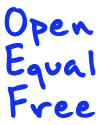World Bank Loans Morocco $100 Million for Education Development Funding
Morocco has made strides in ensuring the quality and coverage of their educational system in recent decades. The World Bank reports encouraging statistics: a rise in primary school enrollment from 52.4 per cent to 98.2 per cent over the last decade, and a rise from 17.5 per cent to 56.7 per cent in secondary education. However, there are still serious issues facing the country— notably a significant decline in enrollments between primary and secondary school and unequal access to education in urban and rural areas. The report shows, for example, that in urban areas, 79 per cent of boys are enrolled in secondary school, while in rural areas only 26 per cent of girls are in school.
 Morocco also struggles with ensuring a quality education for its students. In the 2011 Trends in Mathematics and Science Study, only 26 per cent of Moroccan 4th graders reached international benchmarks in mathematics, and only 36 per cent of 8th graders met those standards.
Morocco also struggles with ensuring a quality education for its students. In the 2011 Trends in Mathematics and Science Study, only 26 per cent of Moroccan 4th graders reached international benchmarks in mathematics, and only 36 per cent of 8th graders met those standards.
To promote the gains in Morocco, the World Bank has issued two $100 million loans since 2010, with the goal of increasing access to schools, especially for young women. The need to promote a strong educational system in Morocco has become more urgent recently, as youth unemployment continues to grow and jobs are harder to come by. Morocco needs to continue its push toward educational reform to field a more competitive workforce.
Creative Commons Love: henskechristine on Flickr.com



